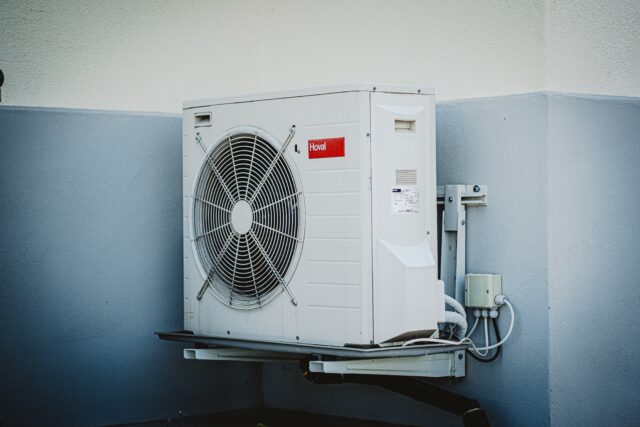This site may earn affiliate commissions from the links on this page. Terms of use.
(Photo: Carlos Lindner/Unsplash)A startup from Florida has devised a new method of air conditioning said to carry less of a negative burden on the environment. Blue Frontier—which just received $20 million from Breakthrough Energy Ventures, Bill Gates’ clean tech investment fund—says its technology cools the air using 60 percent less energy than conventional air conditioning systems.
The way we currently cool our homes, schools, and businesses reportedly has a heavier impact on climate change than one would assume. Some researchers estimate air conditioning could be responsible for up to four percent of the world’s annual carbon dioxide (CO2) emissions, with that figure expected to rise with global temperatures.
Conventional air conditioning has already received one Earth-friendly update: Chlorofluorocarbons and hydrochlorofluorocarbons have largely been removed from major refrigerants due to their negative effect on the ozone layer. But there’s still a long way to go if we want to remove air conditioning’s climate culpability altogether. The refrigerants used today still contribute to air conditioning’s overall CO2 emissions, as does the transportation of said refrigerants and actual air conditioning equipment. Additionally, nearly a third of the energy used to power an air conditioning unit isn’t even used to cool the air—it’s used to dehumidify it.

(Image: Blue Frontier)
Blue Frontier says its system significantly reduces the amount of energy needed to cool a building while also massively reducing refrigerants’ effect on the environment. The system works by using electricity to power a heat pump, which concentrates a liquid desiccant and stores it in an energy storage tank. When cooling is needed, that high-concentration desiccant can dehumidify air and subject the air to indirect evaporative cooling. This means the system is capable of removing excess moisture from the air for users’ comfort without sacrificing energy efficiency, even in generally humid locations. (However, Blue Frontier’s site does say its technology is 10 times as efficient in arid climates, like Phoenix, Arizona, as opposed to humid ones like Miami.)
The startup is still in its early stages, but it plans on testing its system in the “real world” soon. Blue Frontier will install a few units in buildings as early as this year, with commercial tests coming in 2023. Commercial units could be on the market as soon as 2025, with residential units to come in the years following.
In an age when celebrities’ gratuitous private flights are responsible for half of the world’s plane-related CO2 emissions, it’s difficult to stomach blaming conventional air conditioning (which individuals increasingly need to, you know, survive) for even some portion of climate change. But one might argue the planet needs all the help it can get, and if 1,950 million tons of annual CO2 emissions might be reduced or erased by revamped air conditioning techniques, Blue Frontier’s technology may be worth a try.
Blue Frontier’s website doesn’t appear to say anything about the cost of entry for homeowners, property management companies, or business owners who might be interested in installing one of its systems someday. Reduced long-term energy costs aren’t as convincing if Blue Frontier’s system costs significantly more than a standard HVAC unit. Blue Frontier might still be working to figure these costs out, but a lot of sustainability technology remains out of reach to those without the discretionary funds necessary to test it out.
Now Read:
Source by www.extremetech.com






























